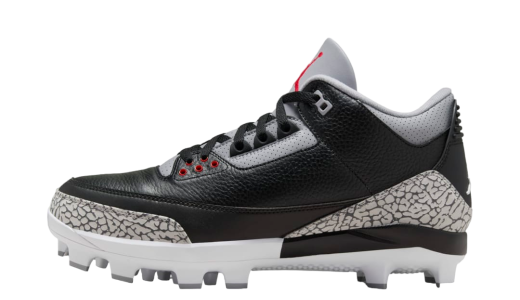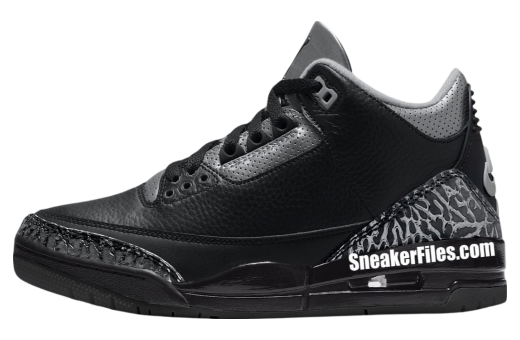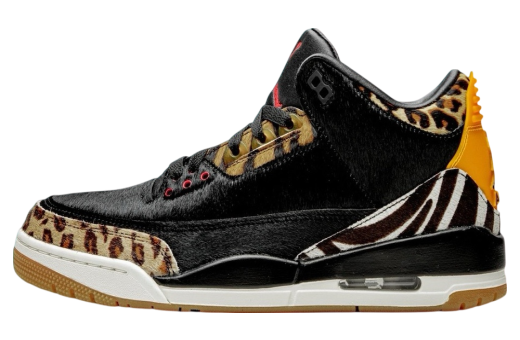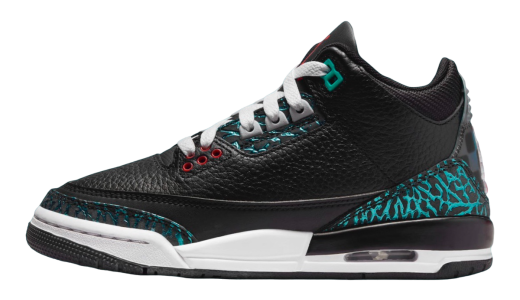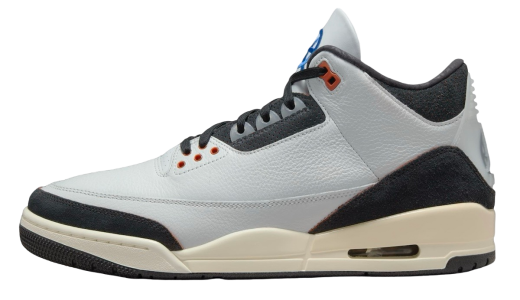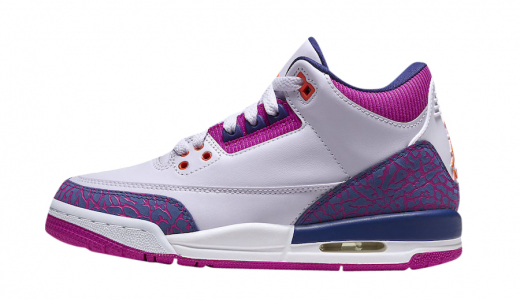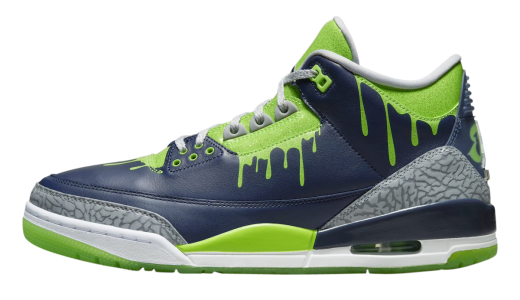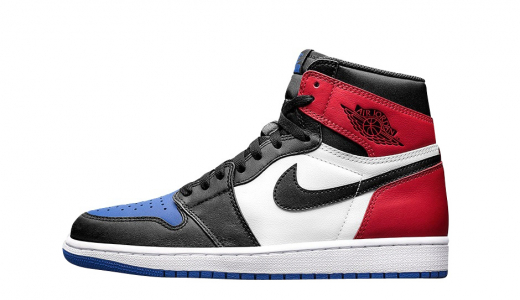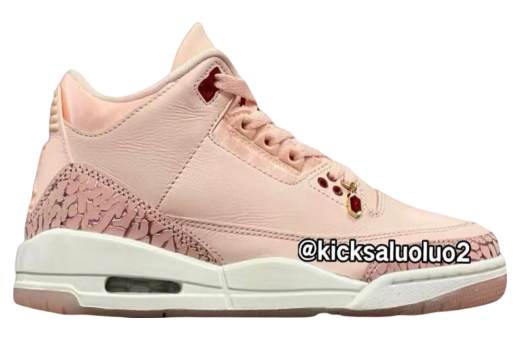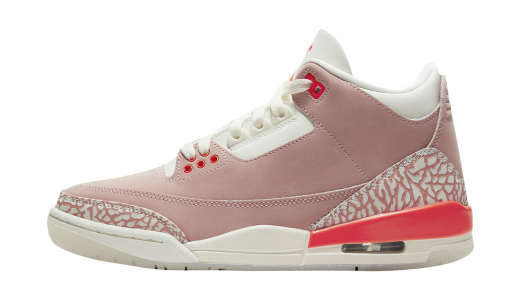Air Jordan 3
The Air Jordan 3, released in 1988, holds a seminal place in sneaker history and sneaker culture. It was designed by Tinker Hatfield, an architect turned sneaker designer who worked closely with Michael Jordan. The Air Jordan 3 was revolutionary for several reasons, one of the most significant being its introduction of the now-iconic Jumpman logo, replacing the original "Wings" logo that had adorned the previous two models. Additionally, it was the first Air Jordan to feature a visible Air unit in the heel, offering not only enhanced cushioning but also setting a new aesthetic standard in the sneaker industry. The sneaker’s design incorporated a combination of tumbled leather and elephant-print detailing, giving it a luxurious yet sporty look that was both functional and fashionable. Tinker Hatfield's innovative approach, combined with Michael Jordan's rising star power, propelled the Air Jordan 3 into an instant cultural phenomenon.
In terms of legacy, the Air Jordan 3 is often credited with saving Nike’s partnership with Michael Jordan, as he was initially considering leaving the brand. The sneaker's standout design and performance capabilities impressed Jordan and convinced him to stay, further solidifying the iconic nature of the Air Jordan line. Over the years, the Air Jordan 3 has been released in numerous colorways and collaborations, continually maintaining its relevance and desirability among sneaker enthusiasts and collectors. Notable re-releases and special editions, such as the "Black/Cement" and "White/Cement" colorways, have remained highly sought after and cherished within the sneaker community. The Air Jordan 3 is not just a piece of athletic equipment; it is a symbol of innovative design, athletic excellence, and cultural impact, making it a timeless classic in the world of sneakers.
History of Air Jordan 3
The History of Air Jordan 3
The year 1988 was a significant one for the sneaker world. It marked the debut of one of the most iconic shoes in the history of basketball and streetwear—the Air Jordan 3. This shoe not only shifted the trajectory of the Nike brand but also cemented Michael Jordan’s legacy in the sneaker industry. Through innovative design, strategic marketing, and a touch of controversy, the Air Jordan 3 became a cultural icon.
Before we delve into the milestones and impact of the Air Jordan 3, it’s imperative to understand the context surrounding its inception.
The Prequel: Air Jordan Line Beginnings
The Air Jordan line began in 1984 when Nike signed a young, promising Michael Jordan to a then-unprecedented endorsement deal. The first two models, Air Jordan 1 and Air Jordan 2, were successful but came with their own sets of challenges. The Air Jordan 1 courted controversy with the NBA for its non-conforming colorway, while the Air Jordan 2 was produced in Italy, making it expensive and less accessible.
By the end of 1986, Michael Jordan was contemplating leaving Nike. He felt the design of the Air Jordan 2 lacked inspiration and wasn't excited about the brand's future direction. Enter Tinker Hatfield, a then-relatively new designer at Nike, who was tasked with creating a shoe that could change Jordan's mind and keep him with the brand.
The Masterstroke: Tinker Hatfield’s Design
Tinker Hatfield’s assignment was clear: create a shoe that not only met Michael Jordan's aesthetic and functional standards but also resonated with the broader audience. Hatfield took Jordan’s input seriously and crafted a shoe that would eventually alter the landscape of athletic footwear.
Several innovative elements defined the Air Jordan 3:
1. **Mid-Top Silhouette:** Prior to the Air Jordan 3, basketball shoes were either high-tops or low-tops. The mid-top silhouette offered the perfect balance of support and mobility—ideal for Jordan's playing style. 2. **Visible Air Unit:** One of the standout features of the Air Jordan 3 was the inclusion of the visible Air Unit in the heel, a design element borrowed from another of Hatfield’s creations, the Air Max 1. This provided enhanced comfort and a futuristic look.
3. **Elephant Print:** The introduction of the elephant print on the toe cap and heel not only made the shoe unique but also added a layer of sophistication and ruggedness. 4. **Jumpman Logo:** Perhaps for the first time, the Jumpman logo appeared on the tongue of the shoes, replacing the traditional "Nike Air" branding. This silhouette of Michael Jordan in mid-dunk became an iconic logo in its own right.
5. **Premium Materials:** Hatfield opted for high-quality leather and meticulous craftsmanship, blending performance with luxury.
6. **Lacelocks and Taglines:** Additional features like lacelocks and “Tinker made them shine. Mike made them fly. You made them iconic.” printed on certain editions added to the shoe’s allure.
Marketing Genius: The Spike Lee Campaigns
Nike also revolutionized the marketing of the Air Jordan 3 through groundbreaking campaigns. They hired Spike Lee, who directed and starred in a series of commercials as his character Mars Blackmon from the movie "She’s Gotta Have It." These advertisements were a hit, blending humor with the undeniable cool factor of both Michael Jordan and Spike Lee. The catchphrase, “Do you know? Do you know? Do you know?” became a cultural staple.
Additionally, an endorsement from the greatest player of all time didn’t hurt. Michael Jordan wore the Air Jordan 3 during the 1988 NBA All-Star Game and the Dunk Contest, where he famously executed the free-throw line dunk. This moment became a part of basketball folklore and further cemented the Air Jordan 3’s place in history.
Technical and Aesthetic Impact
Beyond its immediate popularity, the Air Jordan 3 was a technological marvel. The use of a polyurethane midsole and the Visible Air Unit provided superior cushioning, making it one of the most comfortable shoes of its time. These features became a benchmark for future designs, influencing the entire basketball shoe industry.
Aesthetically, the Air Jordan 3 was a game-changer. Its unique look made it a favorite not only among athletes but also among celebrities and fashion-forward individuals. It seamlessly transitioned from the basketball court to streetwear, a feat that few athletic shoes had managed before.
The Cultural Relevance
The Air Jordan 3 transcended beyond just being a pair of basketball shoes. It became a cultural icon. Over the years, it garnered a diverse fan base from various walks of life—sneakerheads, fashion enthusiasts, and even those who didn’t follow basketball.
Throughout the years, the Air Jordan 3 has been re-released in numerous colorways and collaborations, each preserving its original charm while adding a modern twist. Collaborations with celebrities and designers, such as Justin Timberlake and Hiroshi Fujiwara, have kept the Air Jordan 3 relevant even decades after its initial release.
Retro Releases and Modern Revivals
Nike capitalized on the immense popularity of the Air Jordan 3 by releasing retro versions in various colorways. Each release saw significant sales, showcasing the timeless appeal of the original design. Some noteworthy releases include:
1. **Air Jordan 3 'Pure Money':** A pristine white colorway that focuses on minimalism. 2. **Air Jordan 3 'Black Cat':** An all-black rendition that adds a sleek, modern vibe.
3. **Air Jordan 3 'Doernbecher':** A special collaboration with the Doernbecher Children's Hospital, featuring designs by young patients. 4. **Air Jordan 3 'Free Throw Line':** Commemorating the iconic dunk, complete with a red stripe on the outsole representing the free-throw line.
Each of these iterations highlighted the versatility of the Air Jordan 3 design, making it adaptable to various themes while retaining its fundamental elements.
Endorsements and Collaborations
Over the years, the Air Jordan 3 has seen numerous collaborations, tying it to various facets of popular culture. Limited-edition releases in partnership with designers and celebrities have added layers of exclusivity and desirability. For example:
1. **Justin Timberlake's 'Man of the Woods' Edition:** A unique take with reflective Swoosh placements and subtle color changes. 2. **Hiroshi Fujiwara’s Fragment Design Collaboration:** Featuring minimalist aesthetics and premium materials.
These collaborations ensured that the Air Jordan 3 remained in the limelight, often fetching exorbitant prices in the resale market and maintaining its status as a luxury item within the sneaker community.
Legacy and Impact
The Air Jordan 3's legacy is not confined to sneaker culture; it has permeated various aspects of popular culture. From music videos to movies, the shoe has been featured in numerous contexts, adding to its legendary status.
Moreover, the success of the Air Jordan 3 proved pivotal for Nike. It not only retained Michael Jordan’s partnership but also set a new standard for what athletic footwear could achieve. This shoe laid the foundation for the future Air Jordan models, each carrying forward the lineage of innovation and design excellence.
Conclusion
The Air Jordan 3 is more than just a basketball shoe; it’s a cultural artifact. Its innovative features, combined with strategic marketing and public endorsement, catapulted it to a status rarely achieved by athletic footwear. Through retro releases, collaborations, and enduring appeal, the Air Jordan 3 has maintained its relevance over the decades, proving that true icons never fade—they evolve.
From the free-throw line dunk to the feet of fashion-forward individuals globally, the Air Jordan 3 continues to symbolize excellence, innovation, and timeless style. It has not only shaped the history of basketball shoes but has also left an indelible mark on popular culture. In doing so, it encapsulates the spirit of both Michael Jordan and the era that birthed it, making it a perennial classic in the ever-changing world of sneakers.

